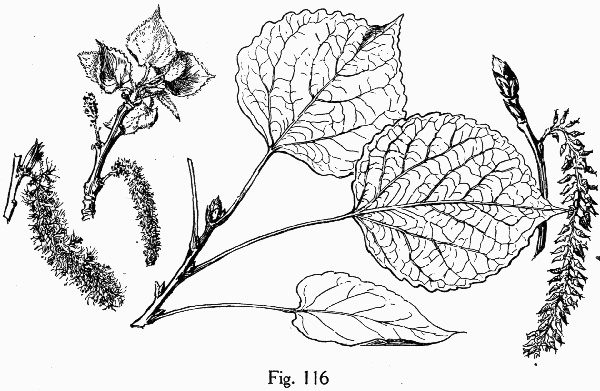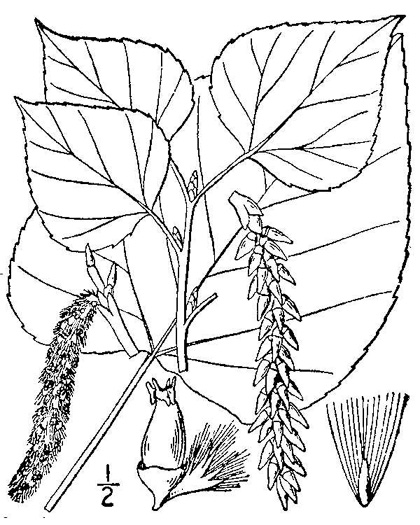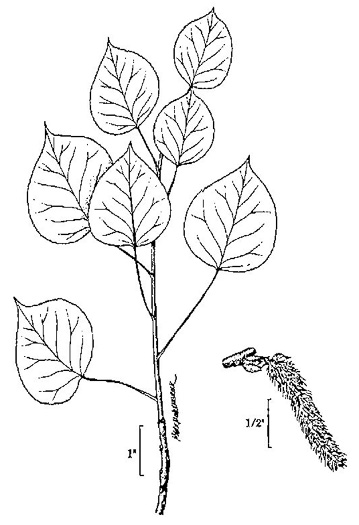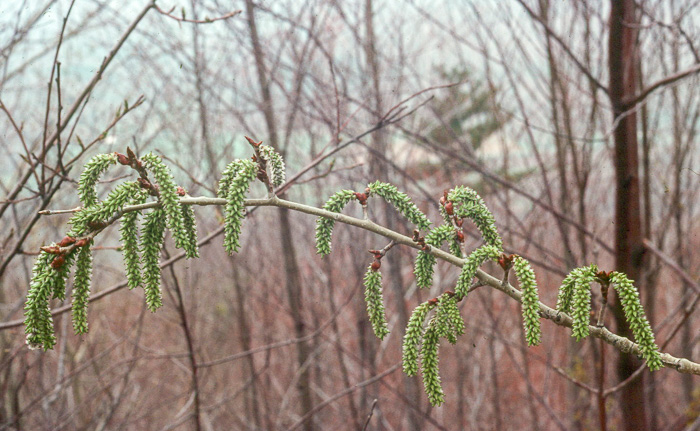Spermatophytes (seed plants): Angiosperms (flowering plants): Eudicots: Core Eudicots: Rosids: Fabids: Malpighiales
WEAKLEY'S FLORA OF THE SOUTHEASTERN US (4/24/22):
Populus tremuloides
FAMILY
Salicaceae
Go to FSUS key
Dig deeper at SERNEC, a consortium of southeastern herbaria.
Read more about Quaking Aspen at Vascular Plants of North Carolina.
SYNONYMOUS WITH
PLANTS NATIONAL DATABASE:
Populus tremuloides
FAMILY
Salicaceae
SYNONYMOUS WITH Flora of North America north of Mexico, vol. 7 (2010)
Populus tremuloides
SYNONYMOUS WITH Manual of the Southeastern Flora (Small, 1933, 1938)
Populus tremuloides
COMMON NAME:
Quaking Aspen
To see larger pictures, click or hover over the thumbnails.
WEAKLEY'S FLORA OF THE SOUTHEASTERN US (4/24/22):
Populus tremuloides
FAMILY
Salicaceae
SYNONYMOUS WITH
PLANTS NATIONAL DATABASE:
Populus tremuloides
FAMILY
Salicaceae
SYNONYMOUS WITH
Flora of North America north of Mexico, vol. 7
Populus tremuloides
SYNONYMOUS WITH
Manual of the Southeastern Flora (Small, 1933, 1938)
Populus tremuloides
If a search such as "Carex leptalea var. leptalea" doesn't deliver the results you want, try "Carex leptalea".
Or, to minimize chances of a misspelling, try just "Carex le".
Less is more: If "pencil flower" doesn't deliver the results you want, try "pencil".






